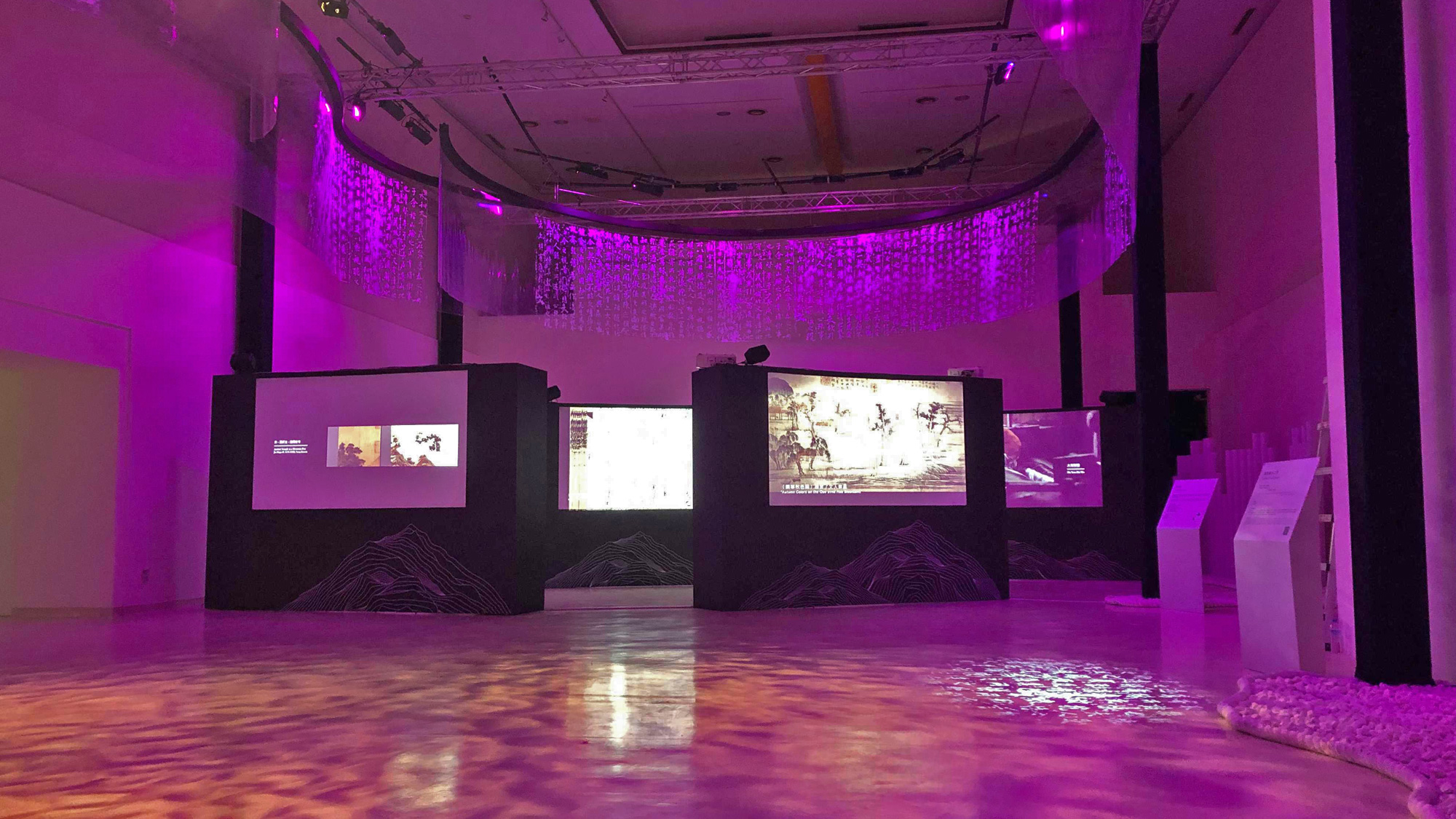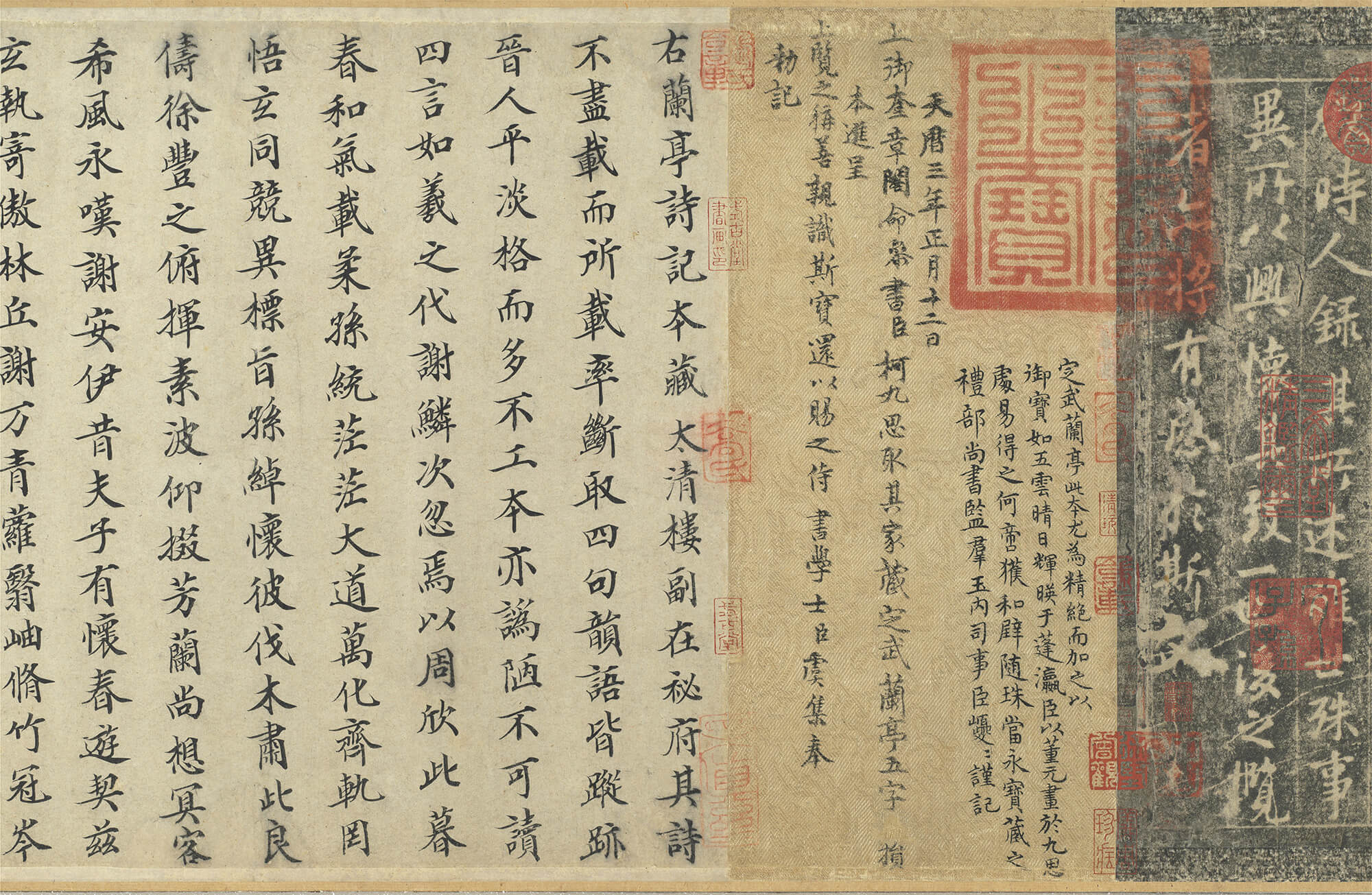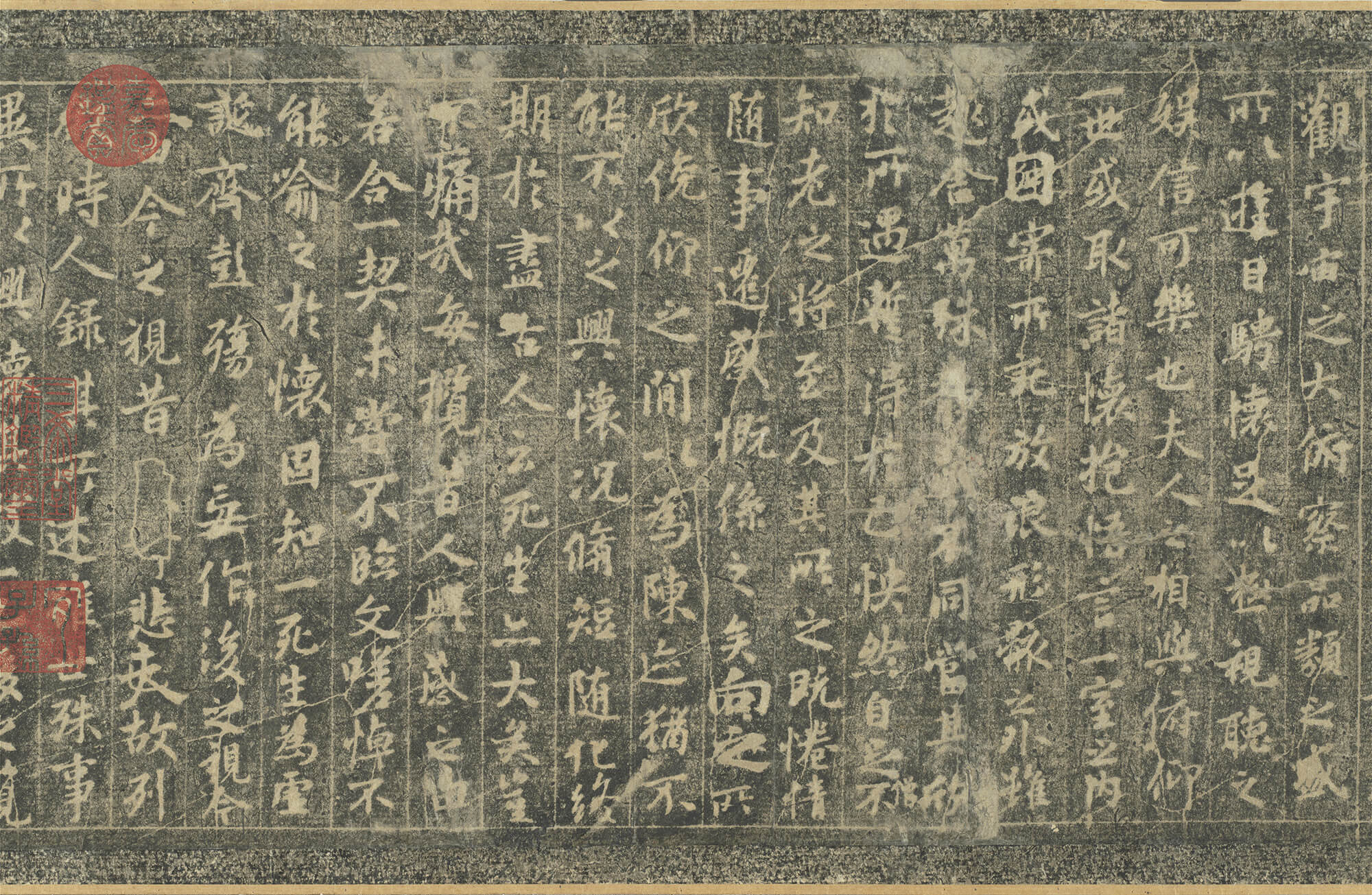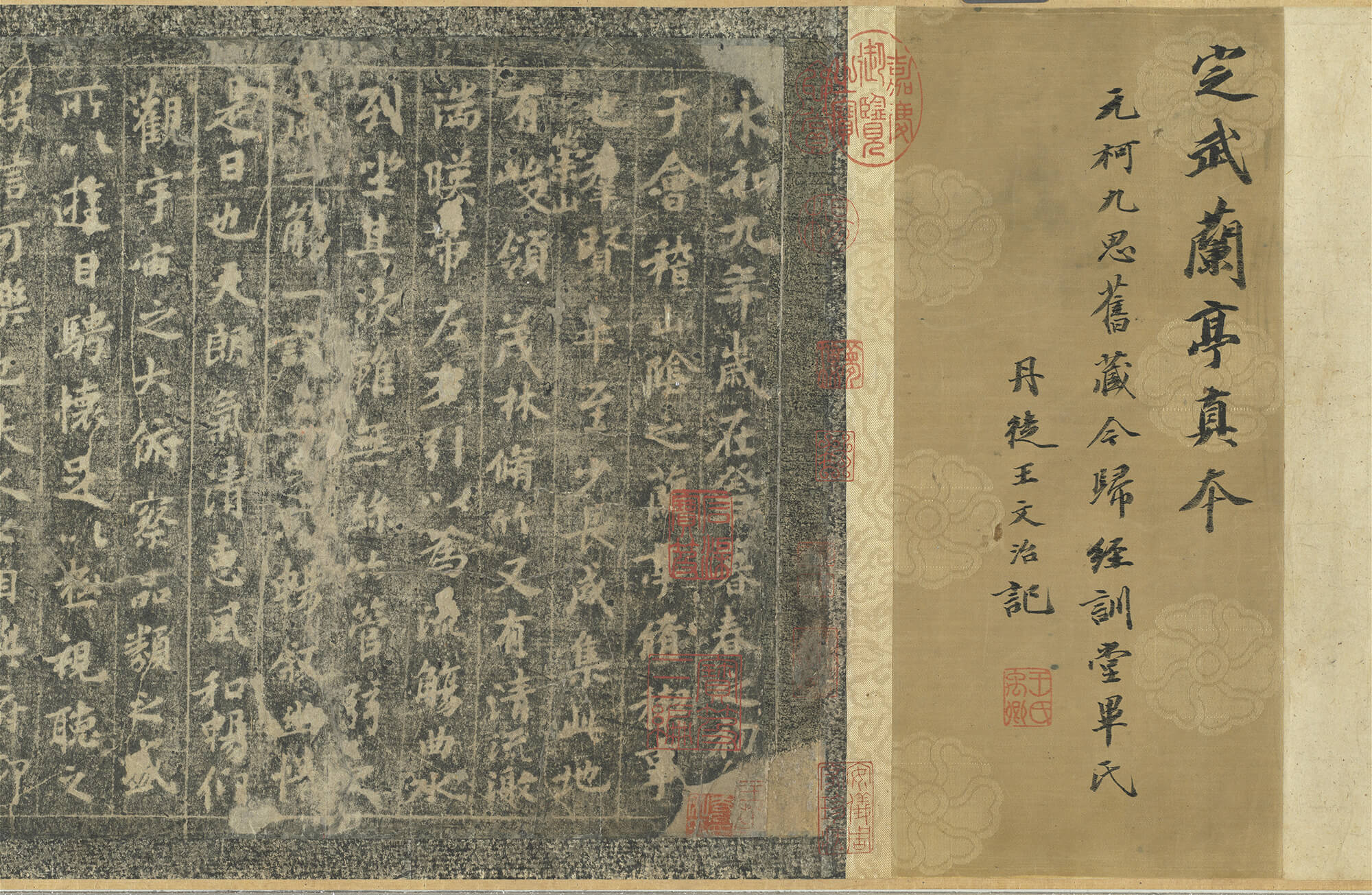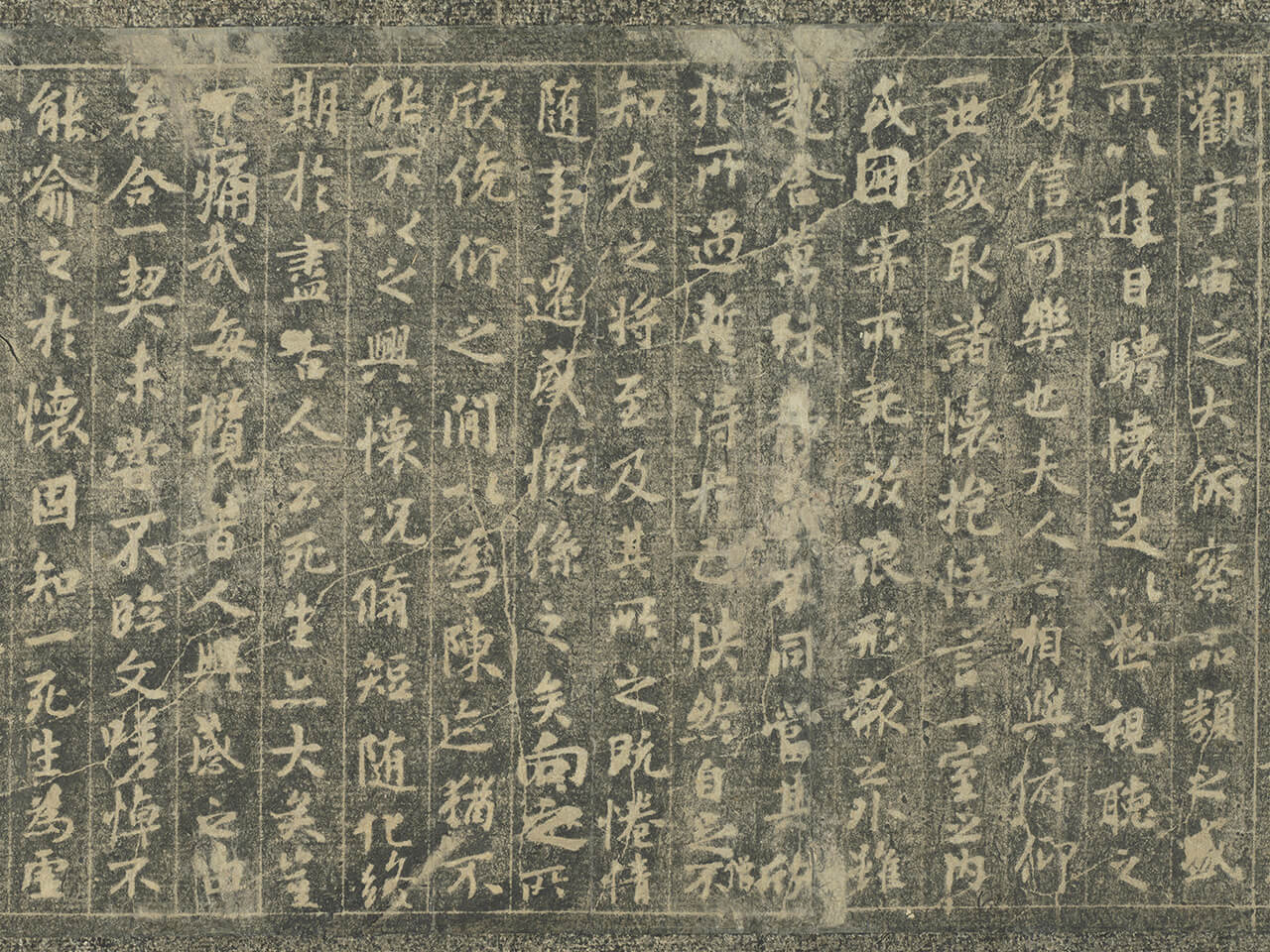Introduction
a swift, limpid stream reflects the sunlight as it flows past either side of the pavilion.
-
Artifact Inspiration:
Original Dingwu Copy of the Orchid Pavilion Preface
On the third day of the third lunar month in the Yung-ho ninth year (corresponding to 353 CE), Wang Hsi-chih hosted a gathering of friends at the Orchid Pavilion to perform the rites of ablution (purification). Writing a preface to the poetry composed there, Wang’s masterpiece eventually came into the hands of the Tang emperor Tai-tsung (626-649). Although the original was lost, innumerable copies and stone engravings have been made since the Tang dynasty, making this one of the most celebrated models for calligraphers through the ages. The Ding-wu rubbing is one of these copies and named after the site in Hopeh where the stone engraving was discovered. The strokes in the characters here are slightly coarse, and at the end of the scroll are inscriptions by writers of the Northern Song period (960-1127). Judging from the missing characters due to damage and the natural features of abrasion, it appears to be the only surviving complete early rubbing of this stone engraving.
-
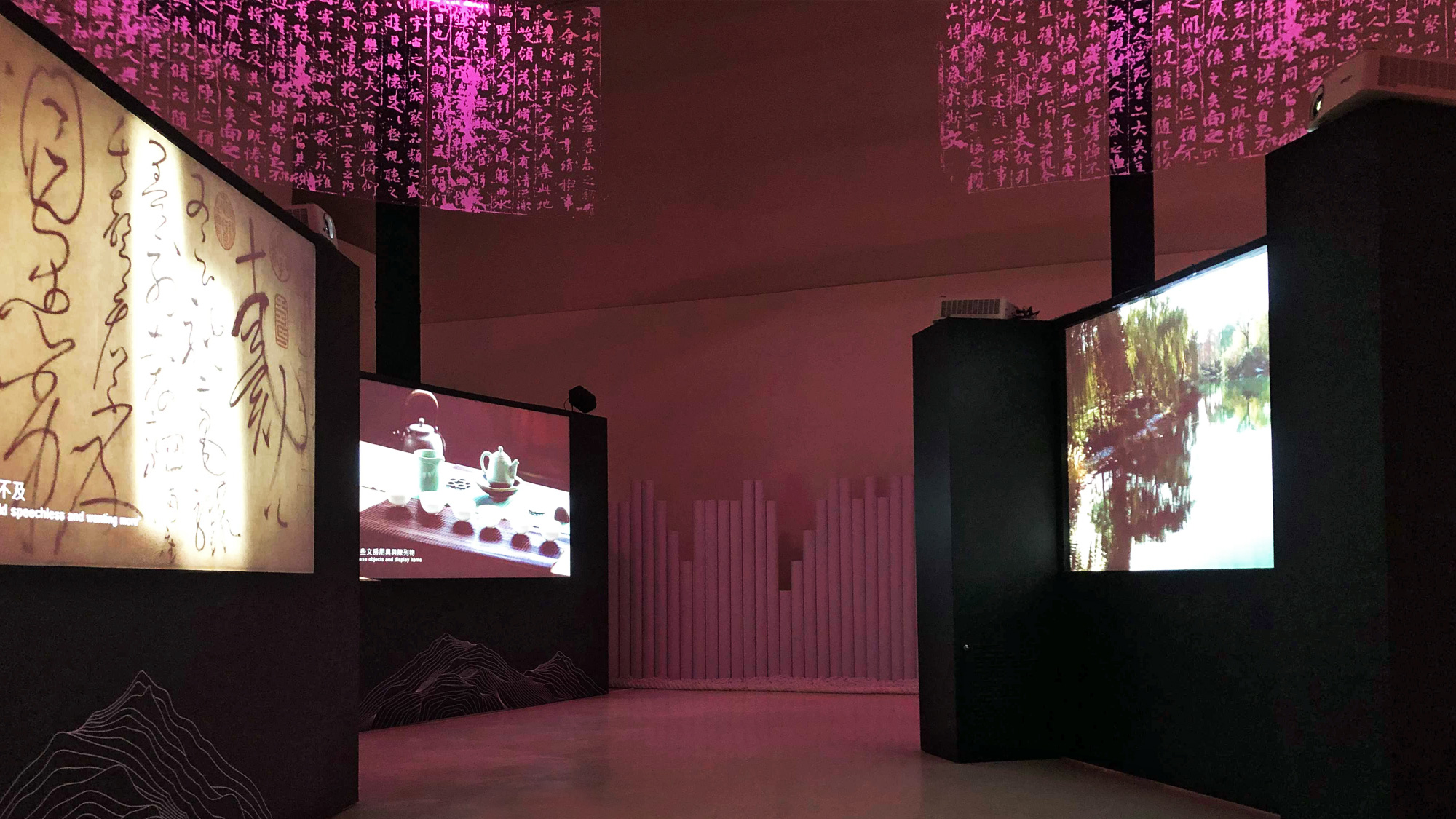
-
Classical Theater Pavilion
This section presents a selection of films introducing the most important artifacts in the National Palace Museum's collection. Through innovative representational methods and high-resolution technology, the films attempt to capture the inner spirit and beauty of the artifacts. The production team also invited a contemporary dancer, music composer, and calligraphist to incorporate diverse and modern interpretations of the artifacts in the films, opening up a dialogue between the contemporary and the timeless masterpieces.
